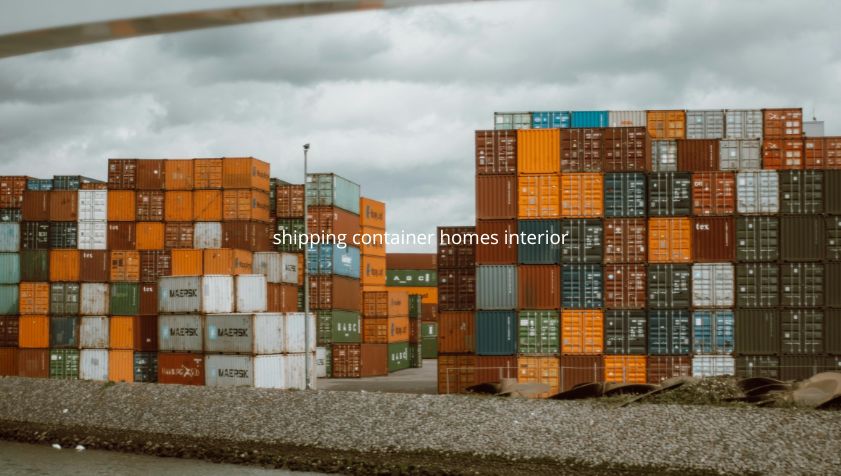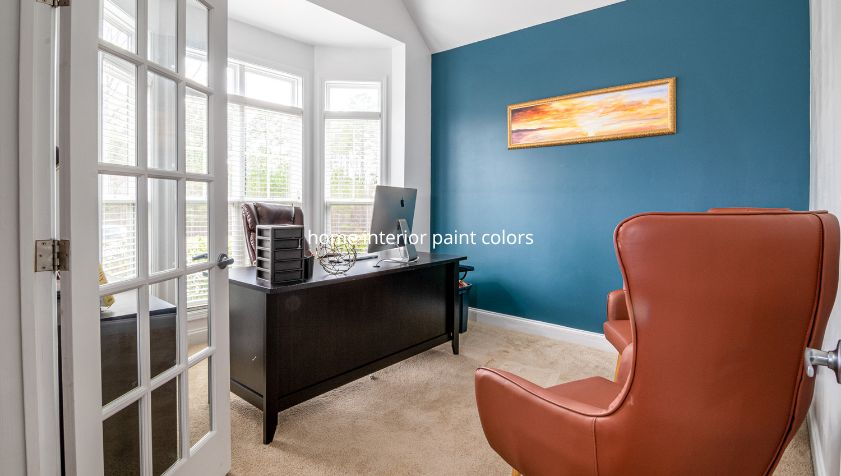Shipping Container Homes Interior: A Complete and Practical Guide for Modern Compact Living
Shipping container homes interior designs have become a major trend in modern housing, offering flexible, affordable, and stylish solutions for people seeking efficient living spaces. In today’s world, where many homeowners want practical yet aesthetically pleasing designs, the concept of shipping container homes interior becomes even more appealing. The first thing people often notice about shipping container homes interior is their unique blend of industrial strength and modern charm. Homeowners appreciate how shipping container homes interior can transform a simple steel box into a warm, functional, and beautiful living environment. Because shipping container homes interior depends heavily on smart layout planning, every detail matters—from lighting, insulation, and furniture placement to color selection and material choice. With creativity and thoughtful design, shipping container homes interior can offer comfort similar to traditional homes while maintaining a distinctive modern character.
Introduction to Shipping Container Homes Interior
Shipping container homes are built using repurposed steel containers that were originally designed for cargo transport. Over the past decade, they have gained popularity not just for their affordability, but also for their architectural flexibility. While the exterior of container homes maintains a rugged, industrial appearance, the interior is where the magic truly happens.
Inside a shipping container home, thoughtful design plays a vital role in turning a narrow steel box into a cozy, functional space. From insulation and flooring to lighting and furniture, every choice determines the comfort level of the residents. Because the width of a standard container is limited, interior design must emphasize simplicity, efficient storage, and smart use of space.
This guide explores everything you need to know about shipping container homes interior—from layout ideas to materials, room-by-room styling, and practical tips for maximizing comfort.
Why Shipping Container Homes Interior Designs Are Growing in Popularity
There are several reasons why shipping container home interiors have become a favorite among modern homeowners and designers:
1. Affordable and Cost-Effective
Container homes generally cost less to build than traditional houses. The structure already exists, so the main investment goes into interior finishing—allowing owners to allocate their budget more efficiently.
2. Eco-Friendly and Sustainable
Reusing steel containers reduces metal waste. Many homeowners also combine eco-friendly materials inside the home, such as reclaimed wood, energy-efficient lighting, and recycled furniture.
3. Stylish and Modern Aesthetic
The industrial foundation of a container home pairs beautifully with minimalist, Scandinavian, or contemporary interior styles. With smooth finishes, neat lines, and creative layouts, container interiors can feel both modern and welcoming.
4. Fast Construction Time
Container interiors can be built relatively quickly because the structure is already complete. Walls, floors, and partitions can be installed efficiently using prefabricated materials.
5. Flexible and Customizable Layout
Homeowners have the freedom to create open spaces, divide rooms, add large windows, or even combine multiple containers to build larger living areas.
Key Structural Elements in Shipping Container Homes Interior
Designing container interiors requires an understanding of several essential components:
1. Insulation for Temperature Control
Steel absorbs heat and cold quickly, so insulation is crucial. Common options include:
-
Spray foam insulation
-
Rigid foam panels
-
Fiberglass batts
-
Eco-friendly hemp or wool insulation
Good insulation ensures energy efficiency and comfort in all seasons.
2. Proper Ventilation
Ventilation keeps the air fresh and prevents moisture buildup, which is especially important in steel structures.
Effective ventilation methods include:
-
Large windows
-
Sliding glass doors
-
Ceiling and wall vents
-
Ventilation fans
-
Indoor plants for air purification
3. Space-Saving Layouts
The narrow width of containers (around 8 feet) means the layout must prioritize efficiency. Open-plan designs help the space feel larger.
Useful strategies include:
-
Built-in storage
-
Multifunctional furniture
-
Loft beds
-
Vertical shelving
-
Wall-mounted fixtures
Interior Design Styles Perfect for Container Homes
1. Minimalist Interior Style
Minimalism fits perfectly with container homes due to the limited space. Clean lines, uncluttered rooms, and neutral colors create a calming environment.
2. Scandinavian Style
This style blends simplicity with warmth. Light wood, soft textures, and earthy tones can transform the industrial container walls into a cozy retreat.
3. Modern Industrial Style
This style embraces the raw charm of the container. Exposed steel beams, metal accents, and dark tones enhance the home’s industrial personality.
4. Contemporary Style
Focuses on current trends—sleek furniture, smart home technology, geometric patterns, and open spaces.
5. Rustic or Modern Farmhouse
Wooden floors, warm lighting, and natural textures soften the steel interior, giving the home a warm, earthy feel.
Living Room Ideas for Shipping Container Homes Interior
The living room is often the heart of a container home. Because the space is narrow, it must be designed smartly.
Here are effective design ideas:
1. Use Light and Neutral Colors
White, beige, light gray, and soft pastels create a sense of openness and brightness.
2. Maximize Natural Light
Install large windows or glass doors to make the room feel expansive.
3. Choose Compact, Modular Furniture
Heavy or oversized furniture will overwhelm the space. Instead, choose:
-
Sectional sofas
-
Modular seating
-
Foldable chairs
-
Wall-mounted TV units
4. Add Vertical Storage
Shelves that extend upward maximize space without crowding the floor.
5. Use Mirrors to Expand the Room
A strategically placed mirror reflects light and gives the illusion of a wider room.
Kitchen Design for Container Homes Interior
The kitchen must be practical and space-efficient. Because of the container’s width, linear or L-shaped kitchens work best.
Tips for a functional kitchen:
-
Use slim or built-in appliances
-
Install upper cabinets to maximize storage
-
Use bright backsplash tiles for visual space
-
Consider a fold-down dining table
-
Use stainless steel or solid wood countertops
If the container home uses an open layout, combining the kitchen with the living room helps make the interior feel larger.
Bedroom Design Ideas for Container Homes Interior
Bedrooms in container homes are typically compact but can still feel comfortable and stylish.
Recommended design strategies:
-
Use platform beds with storage drawers
-
Install sliding doors to save space
-
Keep the color palette soft
-
Add wall-mounted lamps instead of bulky nightstands
-
Create custom built-in closets
A loft-style bedroom is also possible if the container has extended height or if multiple containers are stacked.
Bathroom Design Tips
Even small bathrooms can feel luxurious with good planning.
Tips for container bathrooms:
-
Use compact fixtures
-
Install a corner shower
-
Choose light tiles to make the space brighter
-
Add ventilation fans to prevent moisture issues
-
Use shelves instead of cabinets
Flooring Options for Shipping Container Homes Interior
Choosing the right flooring affects the home’s comfort and aesthetic.
Popular flooring options include:
-
Vinyl planks (affordable and durable)
-
Hardwood or engineered wood
-
Polished concrete
-
Bamboo floors
-
Laminate flooring
Vinyl is especially popular because it resists moisture and is easy to install.
Lighting Recommendations
Lighting dramatically affects the feel of a container home.
Best lighting strategies:
-
Use recessed ceiling lights for space efficiency
-
Add LED strips under cabinets or shelves
-
Use floor lamps in corners to soften the room
-
Maximize natural light with wide windows
Color Palettes That Work Best
The best colors for container interiors are those that make the space feel airy and spacious.
Ideal color choices:
-
White
-
Light gray
-
Beige
-
Soft blue
-
Pastel green
-
Warm taupe
Accent colors like navy, black, or terracotta can be used sparingly to add personality.
Furniture Choices
Space is limited, so choose furniture that is:
-
Multifunctional
-
Foldable
-
Modular
-
Wall-mounted
-
Built-in
Examples include sofa beds, fold-out tables, storage benches, and floating shelves.
Storage Solutions for Container Homes
Storage must be smart and efficient.
Practical storage ideas:
-
Under-bed storage
-
Floor-to-ceiling shelves
-
Over-door racks
-
Hidden cabinet compartments
-
Pull-out drawers in stairs (for loft layouts)
Combining Multiple Containers for Larger Interiors
One container can feel small, but combining two or more opens many possibilities.
Common multi-container layouts:
-
Side-by-side containers for wider rooms
-
Stacked containers for two-story homes
-
L-shaped or U-shaped combinations for large houses
This flexibility is one of the biggest advantages of container homes.
Advantages of Shipping Container Homes Interior Designs
-
Affordable and customizable
-
Faster construction
-
Eco-friendly
-
Unique and modern aesthetic
-
Suitable for urban and rural areas
-
Strong, durable structure
Challenges to Consider
-
Temperature control issues
-
Limited width
-
Potential condensation if poorly ventilated
-
Need for expert planning for plumbing and wiring
Still, with proper design, these challenges can be easily overcome.
Final Tips for Designing the Perfect Shipping Container Homes Interior
-
Keep the design simple and uncluttered
-
Prioritize natural light
-
Use multifunctional furniture
-
Choose colors that brighten the space
-
Combine warm textures to balance the steel structure
-
Plan storage carefully
-
Hire experts for insulation and structural work
Conclusion
Shipping container homes interior design offers endless possibilities for those looking for affordable, stylish, and practical living spaces. Even though containers are compact, smart design strategies—such as using multifunctional furniture, maximizing vertical space, and choosing bright colors—can make them feel comfortable and spacious. With creativity and thoughtful planning, anyone can transform a steel box into a modern, cozy home built for long-term living.
Source:
Architectural Digest, Houzz, Container Home Design Magazine, Home Interior Journal.


